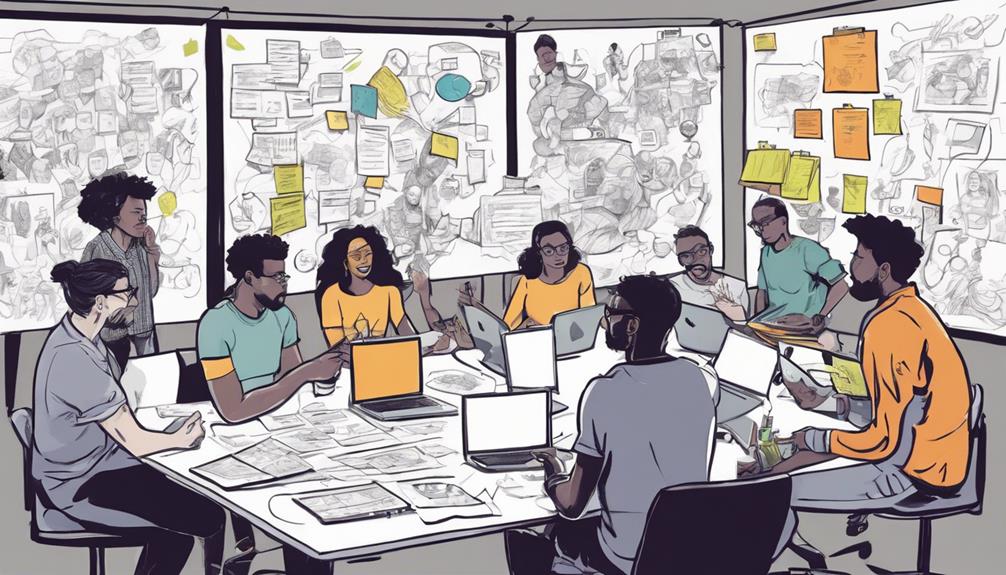Explore the transformative design thinking process used by Apple and Airbnb. Discover its origins, core principles, and key elements like Empathize, Define, Ideate, Prototype, and Test. Uncover the benefits of user-centered design, innovation, and collaboration in various industries. Gain insights into how design thinking has evolved and its applications through case studies. This guide takes you on a journey through the essence of design thinking, offering valuable knowledge at every step.
Key Takeaways
- Design Thinking Process includes Empathize, Define, Ideate, Prototype, and Test stages.
- Focus on empathy, creativity, and user-centric solutions.
- Iterative approach for continuous improvement and innovation.
- Emphasizes collaboration, problem-solving, and positive outcomes.
- Versatile method applicable to various industries and challenges.
Origins of Design Thinking
The origins of Design Thinking can be traced back to the 1990s when Tim Brown coined the term, drawing inspiration from psychological studies of the mid-20th century. Design Thinking is a problem-solving approach that prioritizes understanding the needs and perspectives of users to generate innovative solutions. This methodology revolves around a human-centered design process that seeks to Empathize with users, Define the problem, Ideate creative solutions, Prototype ideas, and Test them for feedback.
By focusing on the end-user throughout the design thinking process, designers can create products and services that truly meet the needs and desires of their target audience.
Design thinking methodology emphasizes a collaborative Process where interdisciplinary teams work together to tackle complex problems. By fostering a creative and iterative approach, design thinking encourages the exploration of diverse ideas and perspectives to arrive at user-centric solutions. Companies like IDEO have championed the application of design thinking principles, inspiring industry leaders like Apple and Samsung to integrate these concepts into their product development strategies.
Core Principles of Design Thinking
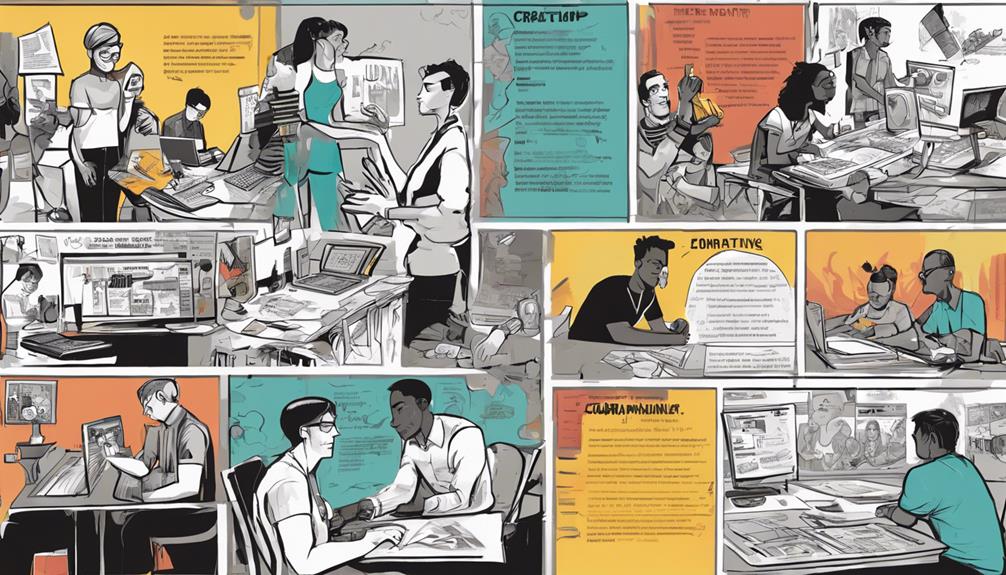
Originating from the innovative mindset of Tim Brown in the 1990s, the Core Principles of Design Thinking revolve around empathy, creativity, and user-centric solutions. At its core, design thinking is all about empathizing with the end-users, defining their needs, ideating creative solutions, prototyping those ideas, and testing them for effectiveness.
This methodology embraces a human-centered approach, focusing on understanding the users' perspectives and designing solutions that truly meet their needs.
Collaboration is key in design thinking, as it encourages teamwork and diverse thinking to drive innovation. The iterative stages of the process allow for continuous refinement and improvement, ensuring that the final product is well-suited to the users it serves.
Companies like IBM and Apple have successfully utilized design thinking to address complex problems and deliver exceptional products and services that resonate with their target audience. By adhering to these core principles, organizations can foster a culture of innovation and create meaningful solutions that make a real impact.
Key Elements of Design Thinking

You need to understand the core design elements that form the foundation of the design thinking process.
These essential process steps, such as Empathize, Define, Ideate, Prototype, and Test, guide you through creating innovative solutions by focusing on user needs.
Core Design Elements
Understanding the core design elements of design thinking is important for successful implementation and problem-solving. These elements guide you through the design thinking process, starting with the empathy stage where you empathize with users to understand their needs deeply.
Moving on to the define phase, you work on defining the problem through user personas and a clear problem statement. Ideation techniques then help generate innovative solutions, followed by prototyping and testing to bring ideas to life and gather feedback through user testing.
User Experience (UX) Design and Interaction Design are vital aspects of this process, ensuring that the final solution is user-centric and intuitive. By following these core design elements, you can create solutions that address user needs effectively, iterate on prototypes, and ultimately drive innovation in a structured and user-focused manner.
Essential Process Steps
In the Design Thinking process, the key elements consist of five essential steps that guide you through problem-solving and innovation.
To start, Empathize involves understanding user needs and experiences to establish a foundation for the design process.
Defining the problem statement is vital as it sets the direction for brainstorming solutions that directly address the identified challenges or unmet needs.
Ideate is the phase where you generate a multitude of creative ideas to tackle the defined problem effectively.
Moving on to Prototype, this step allows you to transform selected ideas into tangible solutions that can be tested.
Finally, Test involves gathering feedback from users on the prototypes to refine and enhance the solutions further.
Benefits of Design Thinking
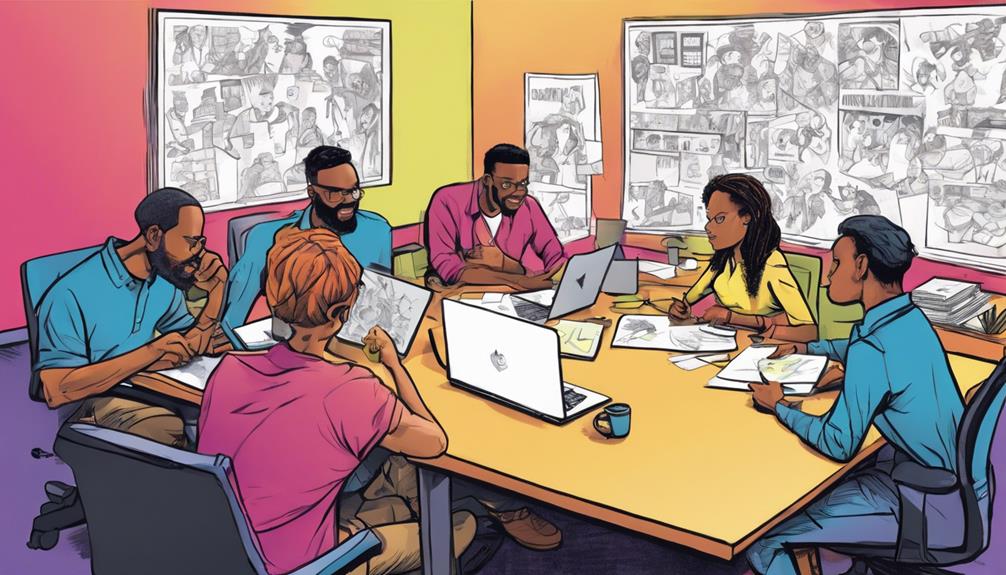
By incorporating design thinking into your team's processes, you can experience significant shifts in work culture, fostering collaboration and creativity. Design thinking offers numerous benefits, including fostering a user-centered design approach, leading to innovative solutions and creating a culture of innovation within your organization. This approach encourages collaborative and creative problem-solving by focusing on user needs and preferences.
To illustrate the benefits of design thinking further, consider the following table:
| Benefits of Design Thinking | |
|---|---|
| Fosters user-centered design | Encourages putting the end-user at the center of decision-making |
| Innovative solutions | Leads to more creative and out-of-the-box solutions |
| Collaborative problem-solving | Enhances teamwork and cooperation among multidisciplinary teams |
Incorporating design thinking methodologies across various teams, such as product development and customer success, can drive positive outcomes by ensuring a user-centric approach to problem-solving.
Applications of Design Thinking

You might wonder how design thinking can benefit you in various ways.
Well, it offers versatile problem-solving methods, aids in creating innovative solutions, and helps tackle complex challenges effectively.
These points highlight the broad applications and advantages of incorporating design thinking into your problem-solving toolkit.
Versatile Problem-Solving Methods
How can design thinking be applied to solve a wide array of problems across different industries effectively?
Design thinking offers a versatile approach to problem-solving by emphasizing the human-centered design process. It starts with empathizing with users to truly understand their needs and experiences.
The next step involves defining the problem clearly, which sets the foundation for ideation and generating innovative ideas. Through the collaborative problem-solving approach of design thinking, diverse teams can come together to brainstorm creative solutions that address complex challenges.
Companies like IBM and Airbnb have leveraged the stages of the design thinking process to drive innovation and create user-centric products and services. By focusing on user needs and experiences, design thinking enables organizations to develop solutions that resonate with their target audience.
This methodology encourages out-of-the-box thinking and fosters a culture of creativity, leading to the creation of innovative and effective solutions across various industries.
Innovative Solutions Creation
Creating innovative solutions through the application of design thinking involves leveraging cross-functional teams to tackle complex problems with a user-centric approach. Design teams working collaboratively can unleash creative ideas and drive the design thinking process forward. By focusing on user needs and utilizing a user-centered design approach, these teams can address even the most complex problems effectively.
Below is a table showcasing the key aspects of innovative solutions creation through design thinking:
| Aspect | Description |
|---|---|
| User-Centric Design | Prioritizing user needs and preferences to ensure solutions meet user expectations |
| Cross-Functional Teams | Bringing together individuals with diverse skills and expertise to approach problems holistically |
| Iterative Process | Repeatedly cycling through stages like Empathize, Define, Ideate, Prototype, and Test to refine solutions |
| Creative Ideas | Stimulating out-of-the-box thinking to generate unique and innovative solutions |
| Problem-Solving | Applying structured methods to address challenges and find effective solutions |
Complex Challenges Approach
Design thinking's application to complex challenges in various industries showcases its adaptability and effectiveness in driving innovation and problem-solving.
When tackling intricate problems through the design thinking process, companies like Apple and Google emphasize the empathize stage to deeply understand user needs. By employing user-centered design and involving cross-functional teams, design thinking offers practical methods to address wicked problems effectively. This approach not only fosters creativity but also helps in unearthing innovative solutions for challenging issues.
Design thinking's ability to drive innovation by breaking down complex challenges into manageable steps has made it a valuable tool for organizations looking to stay ahead in today's competitive landscape. By focusing on user insights and collaborative problem-solving, design thinking proves to be a powerful methodology for generating impactful solutions in a wide range of industries.
Design Thinking in Practice
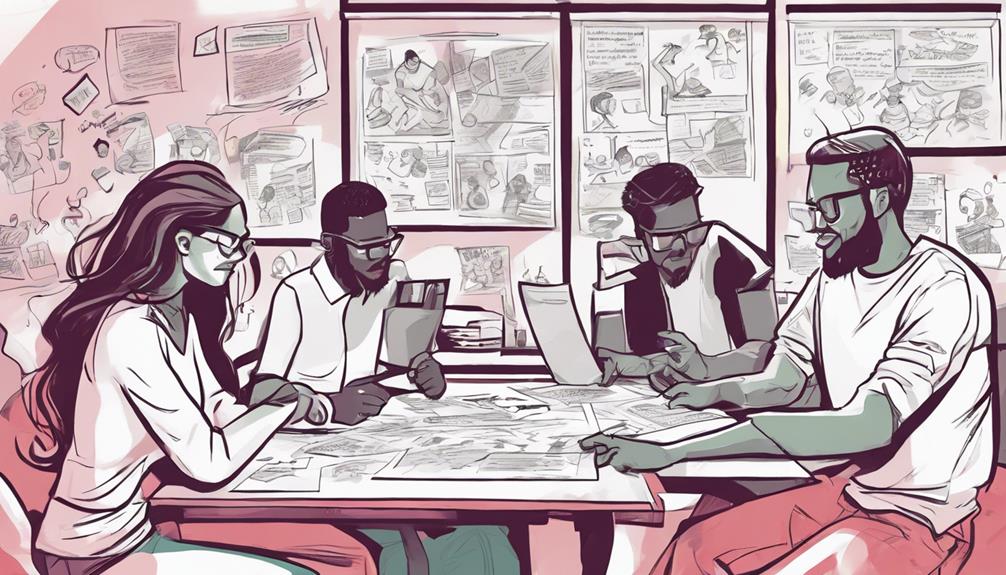
Implementing design thinking in practice requires a collaborative and iterative approach to problem-solving. The process begins with empathizing with users to gain a deep understanding of their needs, followed by clearly defining the problem based on insights from the user research.
During the ideation stage, teams brainstorm creative solutions to address the identified user needs. Prototyping plays an essential role in design thinking, where rough versions of potential solutions are created for testing and feedback.
The testing phase involves gathering feedback from users to refine and improve the prototypes further. Design thinking is characterized by its user-centered design approach, focusing on generating innovative and practical solutions to complex problems.
This iterative and non-linear process allows for continuous refinement and iteration based on user feedback. By incorporating elements of empathy, creativity, and problem-solving, design thinking enables teams to develop solutions that truly meet the needs of the end-users.
Evolution of Design Thinking
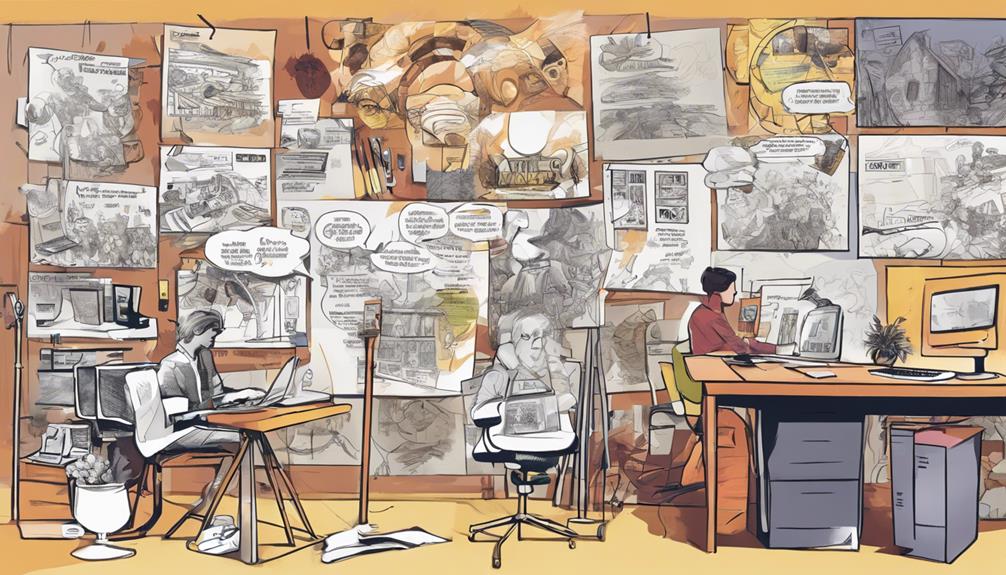
The evolution of design thinking can be traced back to influential figures and pivotal moments in the field's history. Coined by Tim Brown in the 1990s, design thinking has its roots in psychological studies from the 1940s and 1950s.
The concept of a 'wicked problem,' introduced by Rittel and Webber in 1973, further shaped the development of design thinking, emphasizing the complexity of modern issues.
IDEO, established in 1991, has been instrumental in popularizing design thinking principles, advocating for a user-centered design approach. This methodology has gained traction in various industries as companies like Apple and Samsung have successfully implemented design thinking to drive innovation and problem-solving.
The structured approach of the design thinking process, with its five stages – Empathize, Define, Ideate, Prototype, and Test, has been refined over the years.
Institutions like the Hasso Plattner Institute have contributed to the evolution of design thinking, emphasizing its importance in fostering creativity and addressing contemporary challenges.
Design Thinking Case Studies

Exploring real-world applications through design thinking case studies offers valuable insights into companies' problem-solving approaches. By delving into these case studies, you can witness firsthand how organizations have leveraged the design thinking process to tackle intricate challenges successfully. These real-world examples not only showcase the effectiveness of design thinking in addressing complex problems but also emphasize the significance of creating user-centric solutions.
Analyzing design thinking case studies can provide you with a deeper understanding of the benefits that this approach brings to companies. From sparking innovative ideas to fostering collaboration and empathy within teams, successful implementations of the design thinking process can inspire and guide organizations in their quest for solutions that resonate with users.
Frequently Asked Questions
What Is the Step in the Design Thinking Process?
The step in the design thinking process involves deeply understanding user needs through empathy. Define the problem statement clearly, brainstorm for ideas, create prototypes, and gather feedback to refine solutions. Each step is essential for innovative problem-solving.
What Is the 5 Stages in Design Thinking?
So, you're wondering about the 5 stages in design thinking. Well, it starts with Empathize, Define, Ideate, Prototype, and Test. They loop back, not straight lines. Understanding users, defining problems, creating ideas, testing, and refining – that's the journey.
What Are the 5 Steps of the Design Process?
To understand the 5 steps of the design process, you empathize with users, define the problem, ideate solutions, prototype ideas, and test them. Companies like IBM and MassMutual use this process for innovation and improvement.
What Is the 6 Step Process of Design Thinking?
Alright, let's immerse ourselves in the 6-step process of design thinking. You'll explore Empathize, Define, Ideate, Prototype, Test, and Implement. Each step guides you to understand users, define problems, generate ideas, create prototypes, test solutions, and implement designs effectively.
Conclusion
Now that you've explored the design thinking process, you're ready to dive headfirst into a world of creativity and innovation.
With its roots in problem-solving and user-centered design, design thinking is like a compass guiding you through the fog of uncertainty towards the clear skies of endless possibilities.
So grab your metaphorical toolbelt and get ready to craft solutions that not only meet the needs of your users but also inspire and delight them.
The design thinking journey awaits you!

